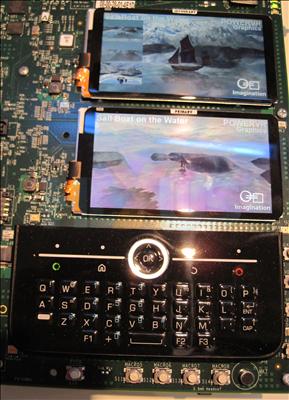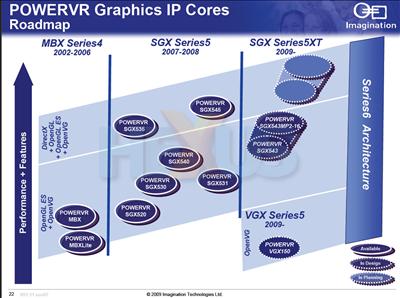Shouting from the rooftops
This is one of those corporate milestone bits of news - like iTunes sells its zillionth track - but a valid one nonetheless. As mobile devices are increasingly used for graphically intensive tasks like playing games or watching video, graphics processing will become ever more important.
And no company (except, possibly, NVIDIA) is counting on that more than UK multimedia chip designer Imagination Technologies, which is why its shouting from the rooftops that over 250 million devices - which include phones, media players and other embedded applications - have now shipped that contain its POWERVR chips.
Imagination specialises in low-power graphics cores in much the same way ARM does processor cores. In fact, for some time, when ARM sold a CPU license it recommended an Imagination graphics core too. That all changed when ARM got into the graphics business with Mali, and now the two companies are competitors.
As the chronology would imply, it's ARM that's playing catch-up in the graphics market. Furthermore 16 percent of Imagination's shares are owned by Intel and 9.5 percent by Apple, so it's got some serious backers.
The POWERVR SGX family is of most interest to the mobile Internet, with the 530 providing the graphics for TI's OMAP 3430 and the 540 in the OMAP 4 series. Both TI SoCs also use ARM cpu designs - Cortex A8 and A9, respectively.
Graphics market watcher John Peddie said the following when Imagination announced it has crossed the 100 OEM product threshold for POWERVR SGX graphics. "Simply put: Imagination's POWERVR is the standard for mobile 3D graphics. The company has built an enviable lead, but more than that it has created an opportunity for both its customers, and the wider developer ecosystem to build a market that for applications alone will be worth more than $5 billion dollars in 2010."
One of the thinks Imagination was keen to draw attention to at MWC was the ability of its SGX 540 chip to support multiple screens and screen-in-screen, as shown on this demo system. Underneath there's a POWERVR roadmap.















